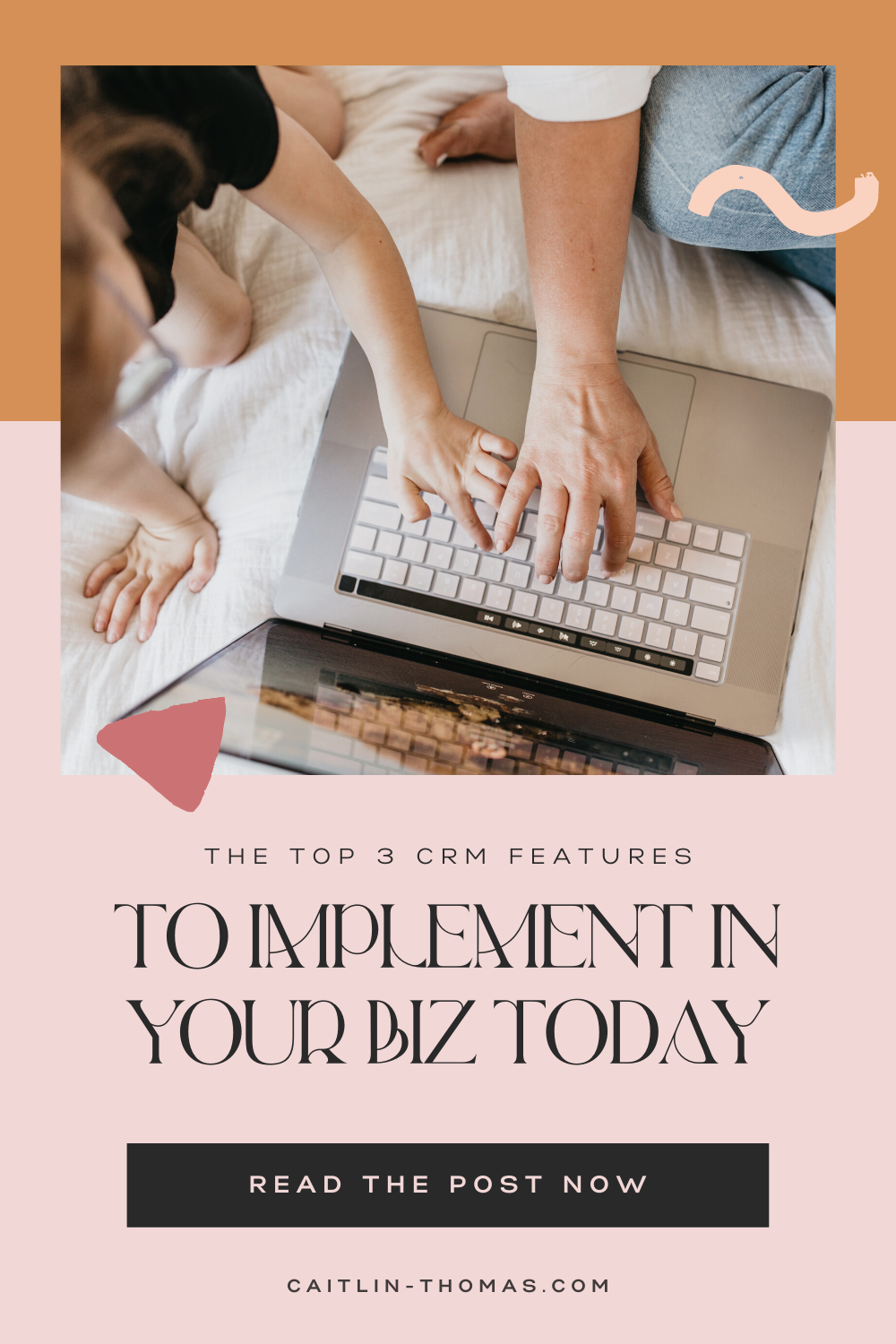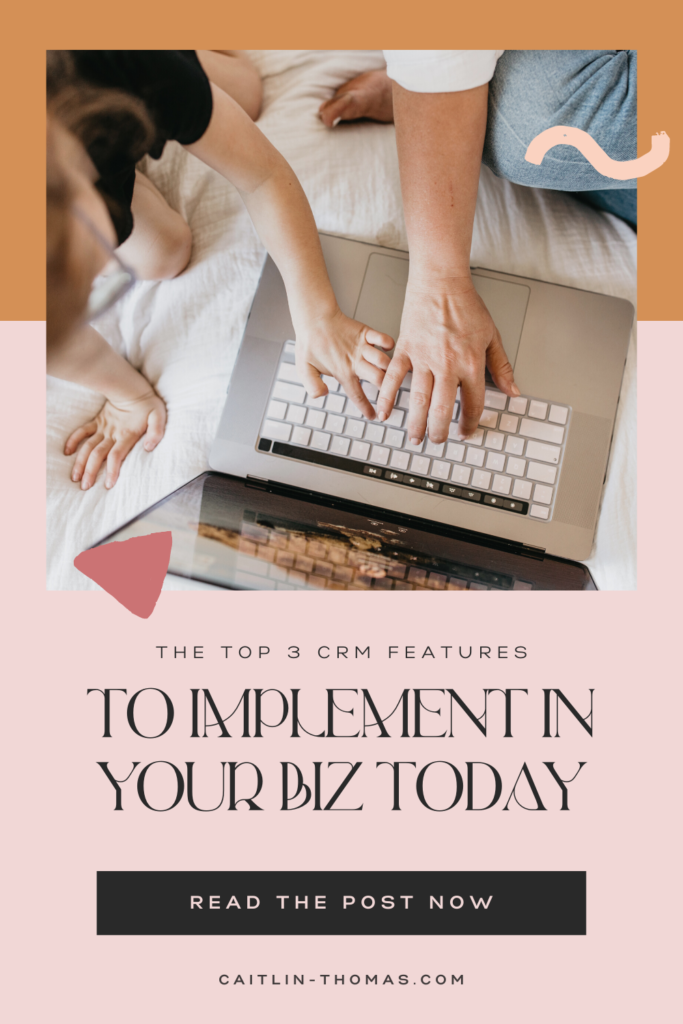The Blog
top posts
3 crm features to implement now
business
lifestyle
photography
5 Ways To Improve Your iPhone Photos
Home Build – Great Room Inspiration

read more
If you are a service provider that deals directly with clients and you are not using a CRM (client/customer relationship management) software, you are missing out.

Why? Because they take all the client facing tools you use (invoices, contracts, scheduling, emails) and put them into one neat little dashboard.
These days I am a big fan of Dubsado. It allows me to create a seamless client experience form start to finish. How? My inquiry form creates a client project, from there I can send proposals, contracts, questionnaires, invoices, schedulers and more.
So what are the top 3 tools that your CRM probably (read SHOULD) have?
- Scheduling – if you are scheduling clients, you should use your CRM to input your availability/schedule, and then send that scheduler to clients so that they can pick a date, sign a contract, and pay a retainer…all in one place. Bonus points for setting up your scheduler to send reminder emails and automated invoices for payments.
- Onboarding – use your CRM to create awesome questionnaires that give you an edge when you are onboarding a new client. Ask them in depth questions that align with your brand. Heck, you can head off potential poor matches with unique questions on your inquiry forms!
- Email templates – if you send the same email over and over, you need to have templates. Most CRMs will allow you to personalize your templates with short codes (for instance, “client first name” “event date”, etc). Some examples of email templates to create might include welcome emails, digital product delivery, invoice reminders, and follow-up with review requests.
If you aren’t using a CRM or you are unhappy with yours, you can use code CAITLINTHOMAS to try Dubsado for free and save 20% off of your first month or year.

read more
Spoiler alert: why manually do something in your business or job that you can automate?

Seriously. There is a wealth of possibility to automate so many obnoxious tasks between platforms and apps today that we have no excuse to be manually doing them, taking up time and energy that could be spent enjoying life or doing needle moving tasks.
A few of my favorite automations that you may not have considered:
- Auto pay your employees or contractors. I use Quickbooks and when I enter a new contractor or employee it automatically sends them a request to input their W9 or W2 information. I can then set up their payment or salary information and have it run payroll automatically. No paper forms, no remembering to submit bi-weekly.
- Auto response to inquiries. If you are running a service based business and you are not utilizing a CRM, you need to be. Dubsado allows me to have automatic email responses to inquiries via my inquiry form based on what someone is looking for. It saves time and helps to weed out potential customers who may not be looking at my price point.
- Email list welcome sequences. When someone gets on your email list, is it crickets or are you welcoming them and introducing them to your brand? Most email list software will allow you to setup workflows, and FloDesk truly kills it at this. When someone gets on our email list, they detonate a new workflow that sends them specific emails at different time increments. I can also send a different workflow depending on what form they used to opt-in (for example, a more business mentorship related sequence or photography).
The possibilities are honestly endless, especially when you automate using Zapier.
Questions? I offer VIP days to help you establish systems and processes in your business, and this often includes automations!

read more
So you’ve been dabbling in photography. You’re the GO TO friend to snap photos at picnics. You’re considering trying it professionally or as a serious hobby but you have no clue where to start.

This may be an unpopular opinion, but I truly do not believe that you need any formal photography education to become a photographer. It is truly an art and a skill that you can develop with practice and dedication.
Starting an actual business is a whole other story, and can be as easy or as difficult as you decide to make it.
Let’s chat basic steps.
- Purchase a DSLR camera. I start with a Canon Rebel, and to this day I am a Canon loyalist. I honestly do not subscribe to the fights between camera systems because I believe good photography has much more to do with the photographer than the gear.
Here is a Canon Rebel starter kit that will get the job done. I recommend grabbing a 50MM lens once it is in your budget. You can start lower end, or invest a bit more. - Learn the fundamentals of photography and start shooting in manual mode off the bat. Auto anything is going to become a crutch that you genuinely don’t need, and will hinder you creatively. Check out CreativeLive.com for great virtual classes.
- Practice, practice, practice. If you want to photograph people, schedule practice sessions with any family and friends that are willing. Photograph them in different lighting situations, at various times of day. Get comfortable with shooting in manual. Practice editing in Adobe Lightroom. Find your personal style.
- If you are starting a business, find a mentor. But listen, never email a seasoned professional and ask for free education. Be completely comfortable with your abilities before reaching out to become a wedding second shooter, and if you need a business mentor, be prepared to pay. A “cup of coffee to pick your brain” is no longer standard practice.
- Don’t buy things that you don’t need. Repeat after me: “I do not need the most expensive gear, presets, or software, I need to practice”. Find the good light and you’ll be well on your way.
Photograph anything and everything (in manual) as much as possible. Know that everyone starts somewhere, and Google is your best friend.